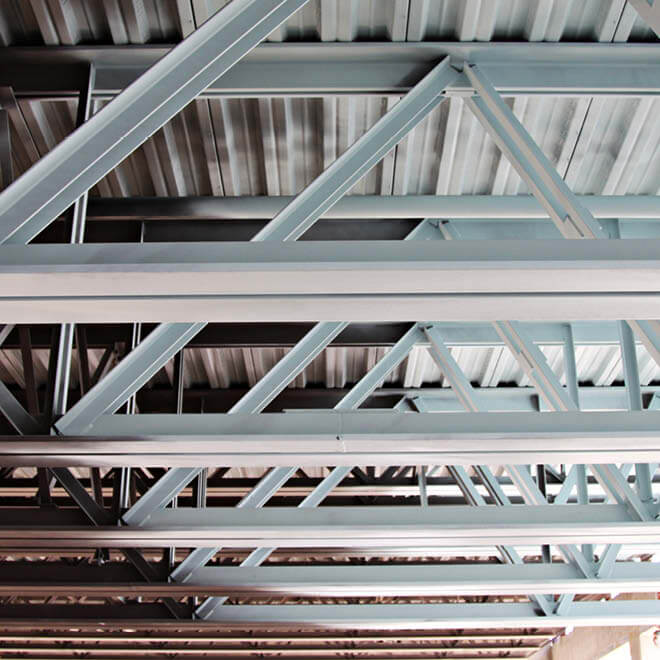Our clients hire us to construct buildings.
You probably read that statement and thought, “Obviously.”
But it’s more than that. AP’s clients hire us to do much more than construct buildings. They’re relying on us – trusting us – to manage all the risks related to their projects. That includes budgets, schedules, trade partners and supplies.
Right now, supply chain disruptions are creating a lot of construction-related risk. Every day, we’re educating our clients about unexpected supply shortages and lengthy delivery times. We’re advising them on shifting financial obligations and schedule delays.
These supply chain disruptions have made AP’s partner mentality more relevant and more important than ever.
The global supply chain is straining to accommodate pent up and growing demand. In the U.S., many companies, institutions and organizations postponed their construction projects because of the pandemic. Now, with vaccines readily available, the economy has reopened. People are returning to work, and construction activity is increasing.
Unfortunately, there’s not enough supply to meet the demand for construction materials. According to global real estate firm Cushman & Wakefield’s June 2021 report, “Commodities Volatility: Impacts on CRE & Construction,” capacity utilization plummeted in March and April 2020. Mills, processing plants and manufacturing operations slowed and/or stopped due to health concerns, supply chain freezes and lack of demand.
Between February and April 2020, capacity utilization dropped:
March 2021 was the first month that capacity utilization for all three of these commodities was as high as it had been in February 2020. Still, capacity remains below prior expansion peak levels and long-term averages. [1]
This lack of supply is impacting general contractors (GC) and trade partners on every level. It’s creating a fight for materials on a first-come/first-serve basis, and prices are escalating due to the supply-demand imbalance.
The risk for supply chain disruptions on construction projects is higher than ever. One of the biggest risks is increased materials cost. You might be tempted to ask which materials cost more, but the better question is which ones don’t cost more.
Across the board, material costs are increasing. Copper. Aluminum. Steel. Wood. Plastic. Everything is more expensive.
At AP, we’ve been closely monitoring prices since the first of the year. We expected prices to increase but, admittedly, we didn’t expect the kind of dramatic movement we’ve seen.
Depending on the materials, prices have increased anywhere from 10 to 100%. To put that in context, under normal circumstances and in normal years, we usually project an inflationary increase of 1 to 1.5%.
Simply put, supplies today are exorbitantly expensive. As of Q2 2021, lumber and copper prices were up 60% from a year ago.[1] Likewise, diesel fuel prices more than doubled (+151% YoY), and cement pricing, which is historically not very volatile, is expected to hit growth rates above 4% later this year.
Here’s a real-world example: AP submitted a cost proposal of a project in North Texas in November 2020. At that time, our proposal was $57 million.
The owner postponed the project and recently asked contractors to submit another proposal for construction. In mid-June, we priced the same project at $66 million – an increase of nearly 10%. And that was with 100% competitive pricing.

Now more than ever, it’s vital to bring the GC on early so constructability options that might mitigate changing costs and scheduling hurdles can be reviewed before they occur. As a GC, it’s our job to explain any changes regarding budget or timeline. Even so, there are things we cannot control, and supply chain disruptions are one of them. We can try to mitigate them but, right now, that requires clients to not only absorb a higher cost than they originally planned, but also to pay for materials sooner.
Transportation issues and a scarcity of shipping containers are contributing to longer lead times.[1] Most forms of transportation are experiencing delays (some intermittently), including ocean freight, air freight, trucking and rail.
Soaring freight rates for 40-foot containers from Asia are compounding the cost increases for construction. Year-over-year, spot rates from Asia to the east coast of North America jumped from $2,709 to $6,604.[1]
Ocean shipping services are struggling to meet demand for imported goods from Asia. Even then, many ports are struggling to unload ships in a timely manner due to pandemic’s impacts on the port workforce.
The challenge for GCs is determining how to integrate these increased material expenses into project budgets and communicate those changes to clients, who may or may not understand the current supply chain situation.
At AP, we are doing our best to alert our customers as far in advance as we can. Previously and generally, project expenses or capital outlay, follow a bell curve – it begins slowly, then ramps up in the middle of the job before dialing down toward the end of the job.
Now, because of the supply chain disruptions and the supply-demand imbalance, the shape of the expense curve has shifted. There’s a big spike in the initial two to three months of a project. We’ve been looking at ways to organize earlier deliveries or store materials ahead of time to combat the changing risk. AP has also warned customers to be prepared to spend more money upfront and that the overall costs will be higher as well.
For example, it’s now unlikely to make design changes once construction has begun because of the prolonged time and planning required to gather the needed supplies for a project. Ordering materials to make any adjustment can now potentially lead to timeline delays.
Increased costs and irregular payment schedules are just two of the challenges that today’s supply chain disruptions have created for GCs and their customers.
If you want to learn about another massive risk caused by supply chain disruptions and how AP has modified its processes to mitigate these risks, look for part 2 of Supply Chain Disruptions Require Enhanced Risk Management next week.
[1] Cushman & Wakefield. (2021, June). Commodity Volatility: Impacts on CRE & Construction. Insights.
